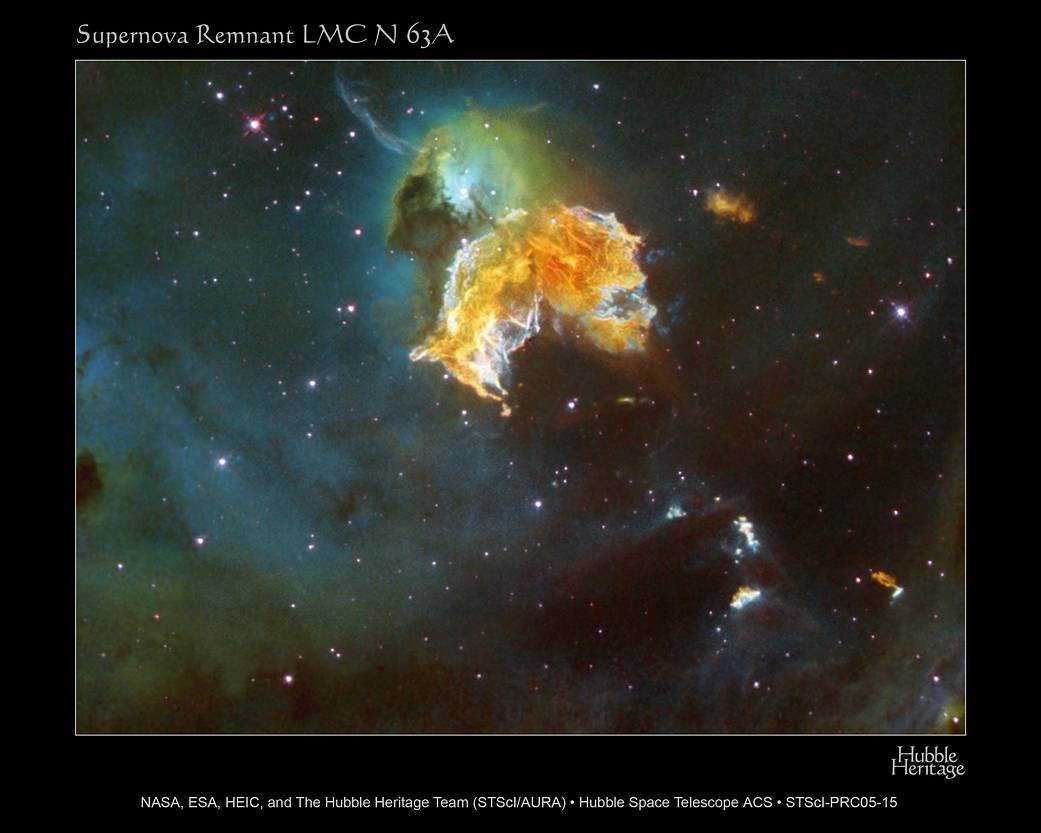A violent and chaotic-looking mass of gas and dust is seen in this Hubble Space Telescope image of a nearby supernova remnant. Denoted N 63A, the object is the remains of a massive star that exploded, spewing its gaseous layers out into an already turbulent region.
This supernova remnant is a member of N 63, a star-forming region in the Large Magellanic Cloud (LMC). Visible from the southern hemisphere, LMC is an irregular galaxy lying 160,000 light-years from our own Milky Way galaxy. The LMC provides excellent examples of active star formation and supernova remnants to be studied with Hubble.
Supernova remnants have long been thought to set off episodes of star formation when their expanding shock encounters nearby gas. As the Hubble images have illustrated, N 63A is still young and its ruthless shocks have destroyed the ambient gas clouds, rather than coercing them to collapse and form stars. Data obtained at various wavelengths from other detectors reveal on-going formation of stars at 10 to 15 light-years from N 63A. In a few million years, the supernova ejecta from N 63A would reach this star-formation site and may be incorporated into the formation of planets around solar-type stars there, much like the early history of our solar system.Image Credit: NASA, ESA, HEIC, and The Hubble Heritage Team (STScI/AURA)
Acknowledgment: Y.-H. Chu and R. M. Williams (UIUC)
2 min read




























